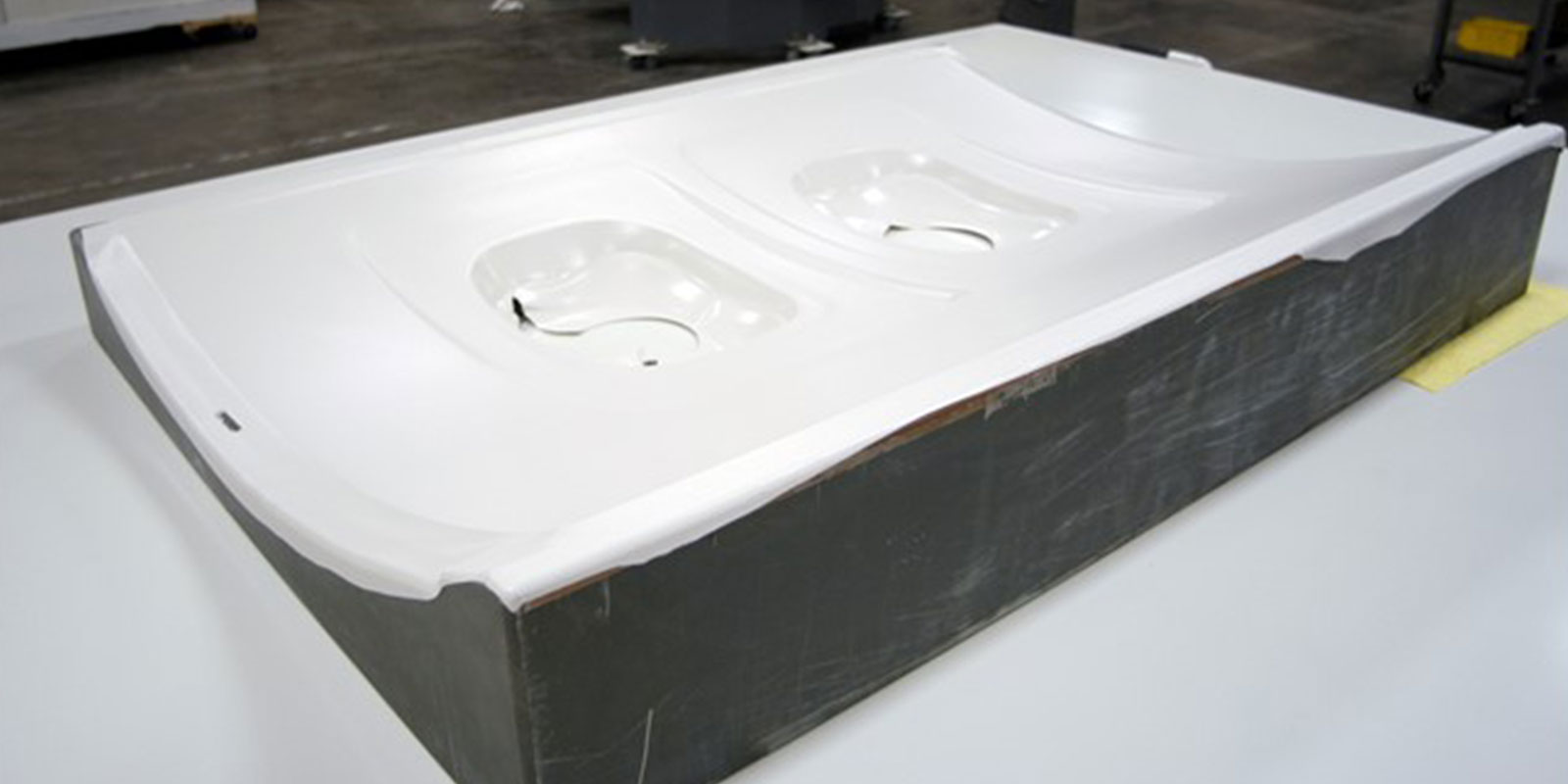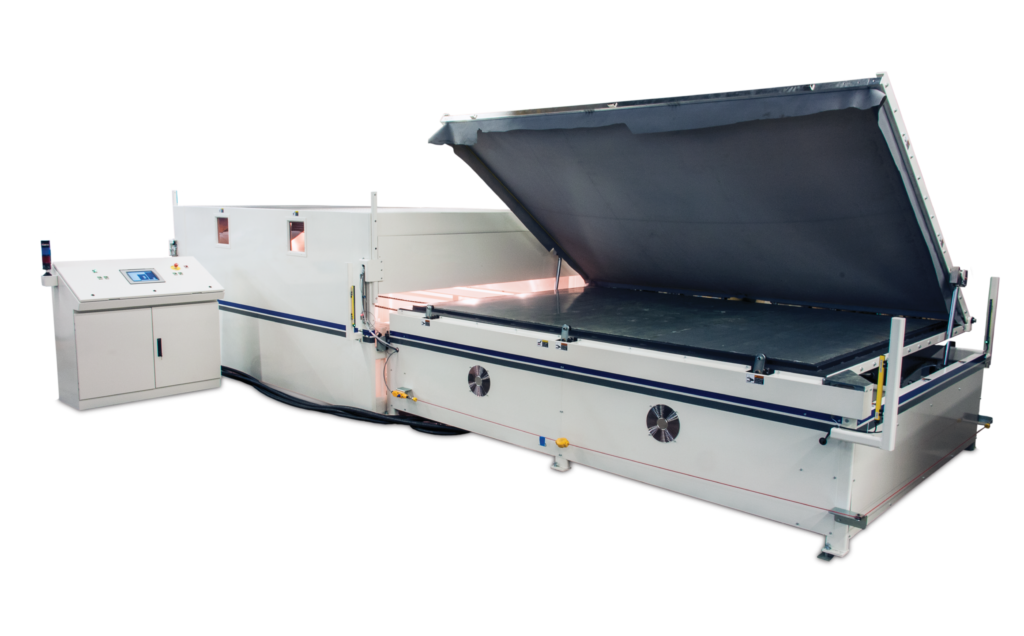
AVIATION VACUUM PRESSES
Evans Midwest proudly introduces their line of aviation vacuum presses, a pinnacle in the field of thermo-laminating technology when it comes to aviation applications. Designed for both flat panel and 3-dimensional laminating, these presses are a testament to over two decades of experience and expertise. Catering specifically to the aviation industry, these presses are renowned for their comprehensive and technologically advanced features. Whether it’s clamshell, shuttle, or vertical lift configurations, each model is meticulously crafted to enhance lamination quality and efficiency. The inclusion of single and/or double membranes in these presses simplifies the process by eliminating the need for part fixturing, while the upper and/or lower heating systems cater to both single- and double-sided laminations.
Bottom line? We help you laminate better, increase productivity, and improve quality.
AP 710S / 1010S Shuttle Presses
The AP 710S and AP 1010S models exemplify Evans Midwest’s commitment to innovation. These “shuttle” style thermo-laminating presses are specifically engineered to laminate both flat and 3-dimensional panels, commonly found in aircraft and railcar interiors. Utilizing infrared heating and vacuum technology, these systems offer unparalleled precision. The presses come in two configurations, capable of handling panels up to 15 or 24 inches thick at the center of the form. Moreover, the option of adding a second shuttle significantly boosts production capabilities. These models can also be equipped with optional pneumatic locking cylinders, cooling fans, and light curtains, further enhancing their functionality.

Standard Features
- Base frame/heating chamber with infrared heating system, viewing windows and interior light. Includes pneumatically operated end-door(s) to retain heat during heating cycle
- Shuttle frame/vacuum bed with laser perforated galvanized steel platen, two (2) vacuum ports to evenly distribute vacuum, and heavy duty casters with rails
- Heating system includes 375 watt infrared emitters rated to 10,000 hours of life, SSR temperature controls, and non-contact thermal sensor
- Silicone membrane mounted to a pneumatically operated, hinged aluminum extrusion with over-center mechanical clamps
- Vacuum system with single stage, rotary vane vacuum pump, vacuum gauge, manual bleed valve and dump valve
- Heating/cooling cycle indicator light with buzzer
- Compressed air blow-off gun with coiled hose
- Console style electrical enclosure
- Automation Direct operator interface (HMI) with six (6) inch color monitor
- PLC controlled sequence of operation with twenty (20) presets
Optional Features
- Allen-Bradley® HMI/PLC controls
- Powered shuttle with pneumatic locking cylinders
- Second shuttle/vacuum bed
- Lower heating system
- Cooling fans
- Light curtain
AP 710S/1010S SPECIFICATIONS
Platen Sizes
AP 710S: 84 x 120 inches
AP 1010S: 120 X 120 inches
Maximum Panel Thickness
AP 710S/1010S-15: 15 inches
AP 710S/1010S-24: 24 inches
Customization and Specifications to Meet Diverse Needs
Understanding the varied needs of the aviation industry, Evans Midwest’s aviation presses offer a range of standard and optional features to meet diverse requirements. Standard features include a base frame and heating chamber with an efficient infrared heating system, viewing windows, and interior light. The shuttle frame is equipped with a laser-perforated galvanized steel platen, facilitating even vacuum distribution, and the heating system boasts long-life infrared emitters with precise temperature controls. For added customization, options such as Allen-Bradley® HMI/PLC controls, a powered shuttle with pneumatic locking cylinders, a second shuttle, a lower heating system, cooling fans, and a light curtain are available. The AP 710S and AP 1010S models come in various platen sizes and maximum panel thickness options, ensuring they can be tailored to specific industrial needs.
These paragraphs highlight the advanced features and versatility of Evans Midwest’s aviation vacuum presses, emphasizing their adaptability and technological sophistication, tailor-made for the aviation industry’s demanding requirements.
